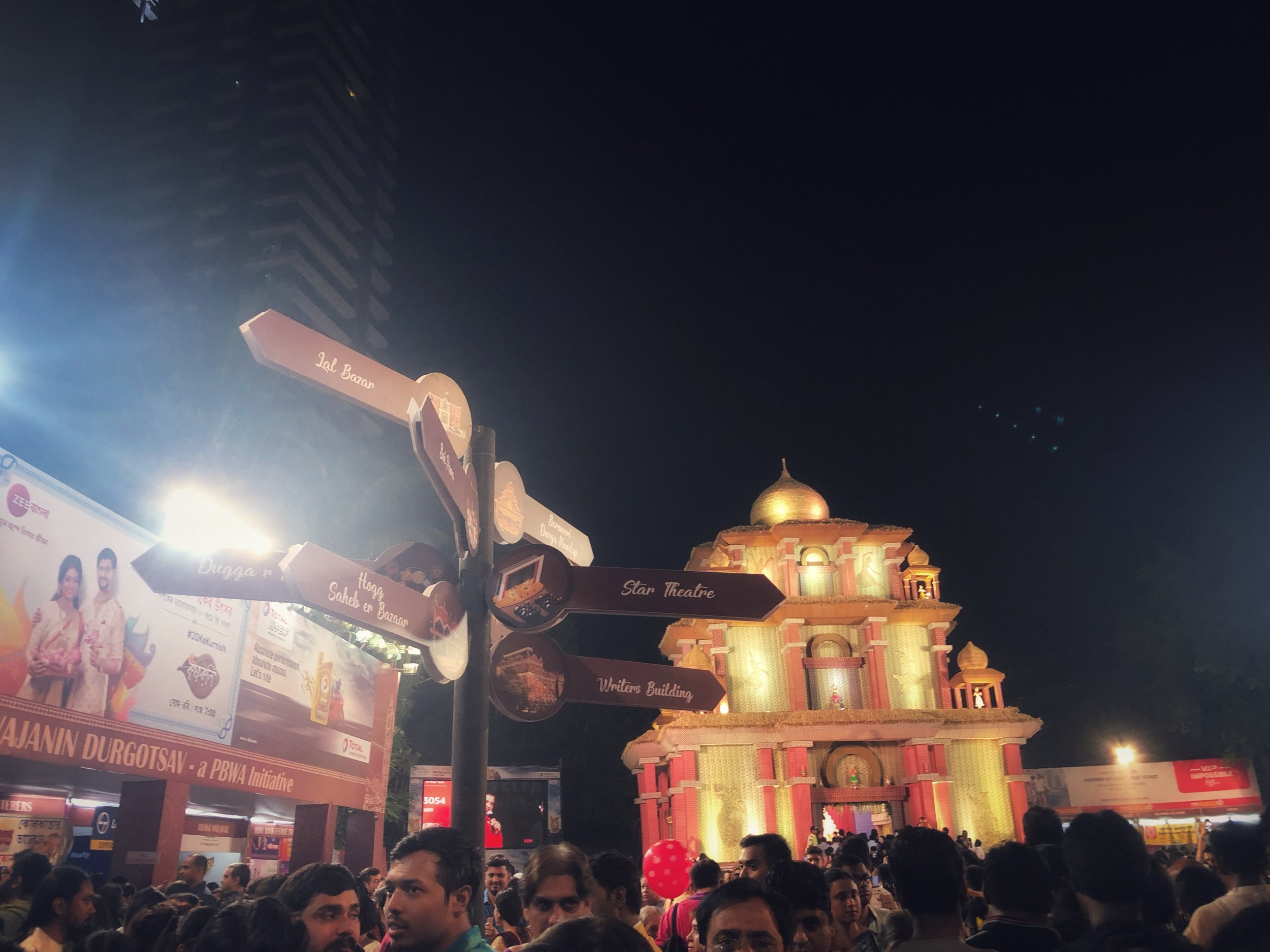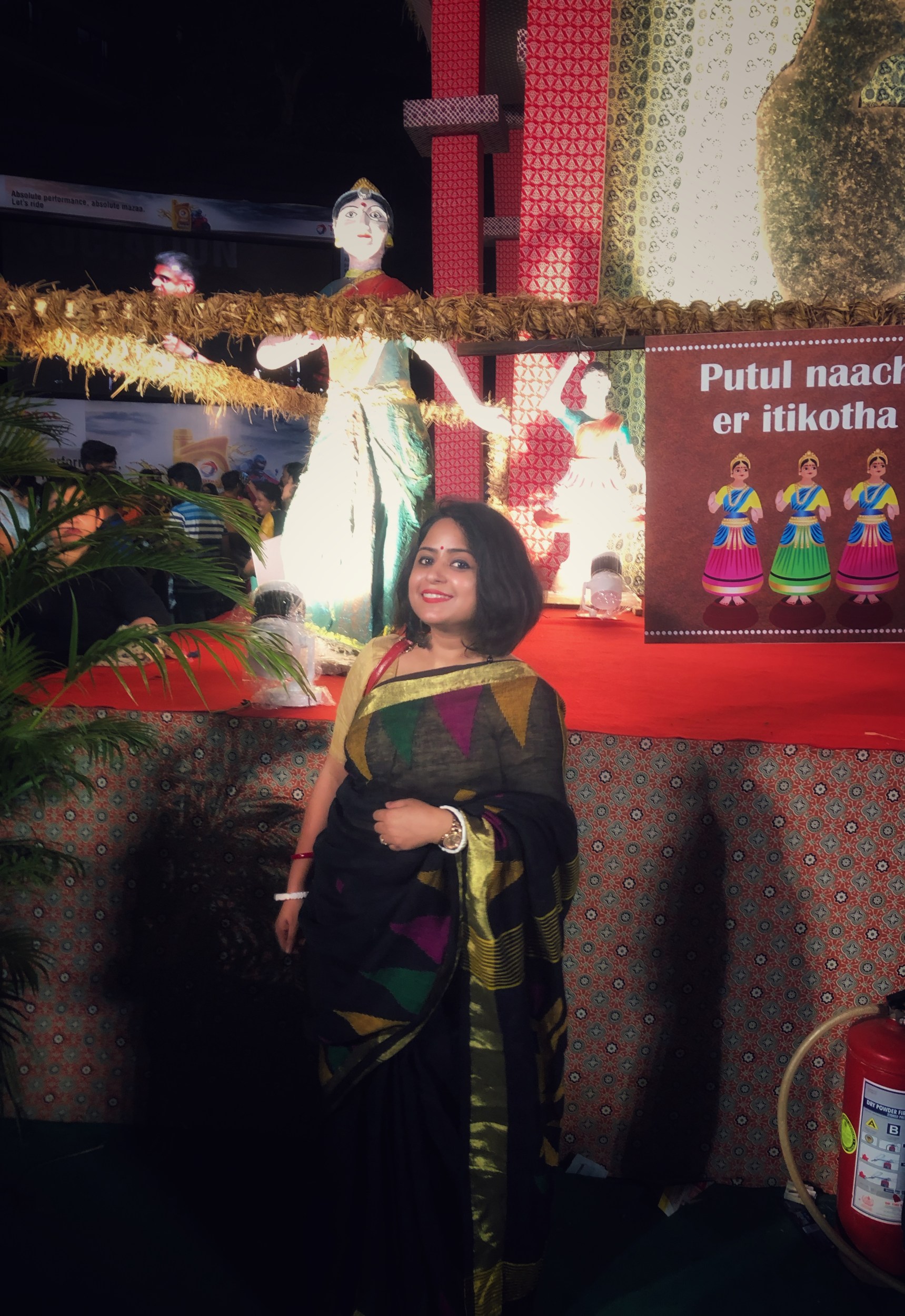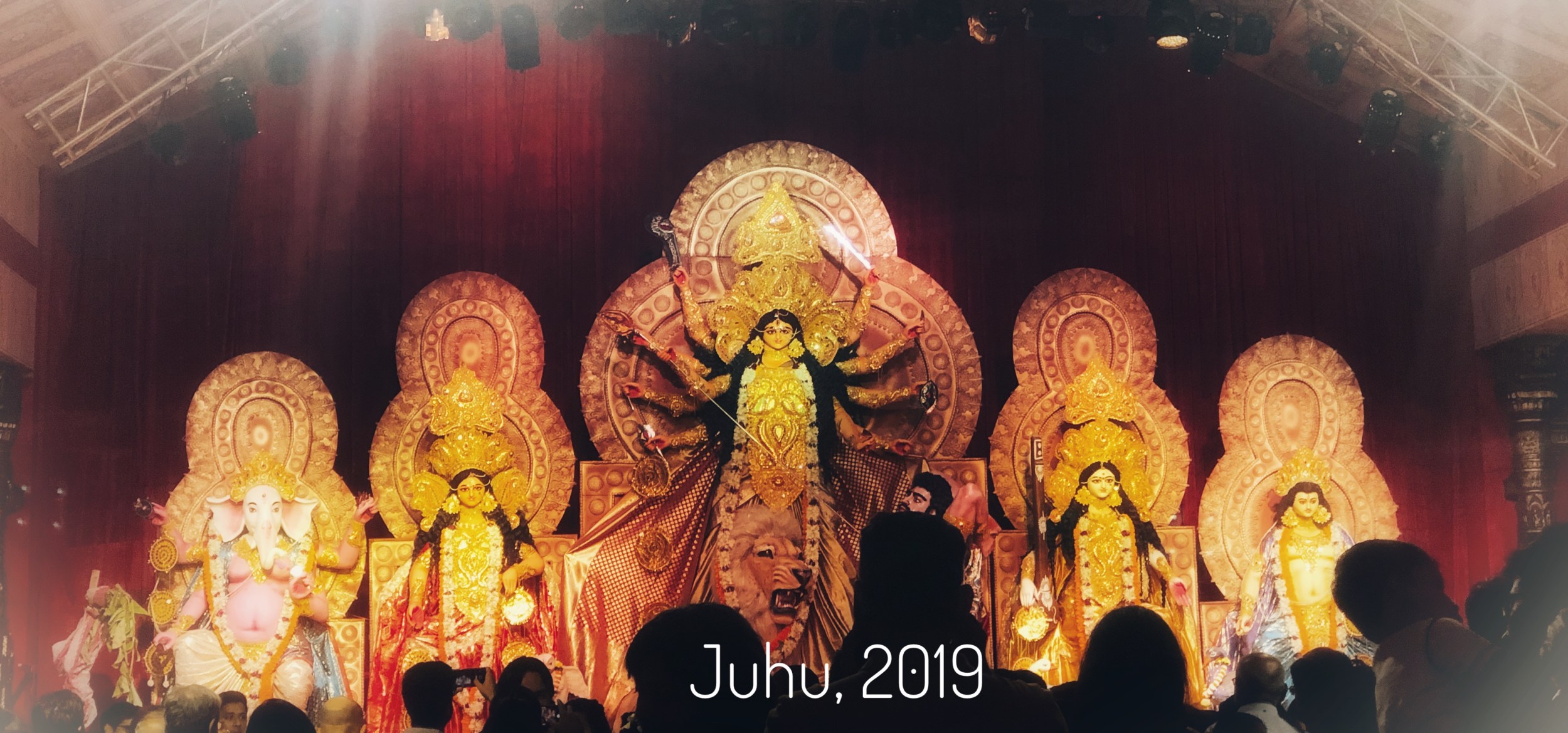I was in Bombay during Durga Pujo celebrations a few years back. Great company, great timing and with the support of my super awesome sister, I shushed my lazy self. Luckily, it’s the time of weekend and I could shift my focus from conversations, negotiations, deliverables to decking up, getting excited and hopping Pujo Pandals. It’s a treat for senses and the soul.
If you ask me (a North Indian fascinated with Bengali culture and traditions), there are five steps to experience the full depth of a Durga Pujo celebration. For an authentic experience, don’t miss any of these steps:
1. Dress up, traditionally
The preparation for Durga Pujo starts weeks (if not months) in advance. Depending upon your style and dress preferences, you can choose from a range of options availability: traditional drape sarees, half-drapes with halter blouses, simple yet elegant Kurtas teamed up with Jeans or Palazzos, dhoti-kurtas or loose, cotton tops with pants or skirts. Howsoever you choose to dress, bring your ‘A’ game. Smile and get ready for one of the biggest carnivals in the world.


2. Inhale the grandeur, love the gods and offer your prayers
It’s easy to confuse Pujo celebrations with big, glamorous parties. 😀 Well, it’s a celebration because Maa Durga visits her home along with her kids during this time (that’s what is believed). So all earthly beings, who are supposed to be Maa Durga’s relatives, celebrate her arrival.
But it’s also the time to find space to connect with self, surrender the insatiable desires of pursuing worldly pleasures & connect with the larger cosmic powers. In short, stand before the Thakur (idols of Maa Durga, Maa Saraswati, Maa Lakshmi, Lord Ganesha & Lord Kartikeya), close your eyes for as long as possible & offer prayers.
Every evening, before Bhog, it’s ritualistic to offer Pushpanjali (offer flowers) to Maa Durga. The pundit chants Mantras which the devotees repeat, followed by the offering of flowers. Pushpanjali is repeated three times at every instance with three unique mantras.
And then yes, go out & celebrate with your friends and family. Eat to your heart’s contents. Ask for more food. A little push and shove won’t heart anyone since there are long queues. 😉 Make memories. When time turns new chapters in your life, all you hold on to from the past is memories.




3. Dance along to the rhythm of Dhak & Dhunuchi Naach
My favourite part of all religious festivals is the ritual of prayers which translates into Aarti for the followers of Hinduism. 🙂 Naturally my most favourite part of Durga Pujo then becomes following the music of Dhak, and looking intently the Dhunuchi aarti/ naach without batting my eyelids.
Dhunuchi is a clay pot that has a coconut husk inside, that’s used to burn incense and camphor. Pretty much like any Navratri Aarti, but what’s unique is the Dhunuchi dance that devotees perform to thank Maa Durga. At that moment, it will take immense willpower to stop yourself from dancing along. If you have a thing for perfection and would not like to disturb the formation of Dhunuchi dance, stand at a distance by all means and enjoy the mesmerising dance of love for Maa Durga


4. Go for some Pandal Hopping
You haven’t done a good job if you haven’t hopped Pujo Pandals. Months of intricate planning and hours of hard work goes into setting up gigantic, breathtaking Pujo pandals. So, why not travel a little, build an adventure route, and visit as many Pandals as you can within your city?! 🙂




5. Say your Goodbyes: Aasche Bochor Abar Hobe
Every good thing comes to an end, and so does the Durga Pujo celebrations…on Dusshera/ Vijaydashmi. People wish each other Shubo Bijaya and go back home with truckloads of memories and good times. It’s time for goodbye until the next time!
Aasche Bochor Abar Hobe (meaning: it will happen again next year).
Dugga, Dugga!